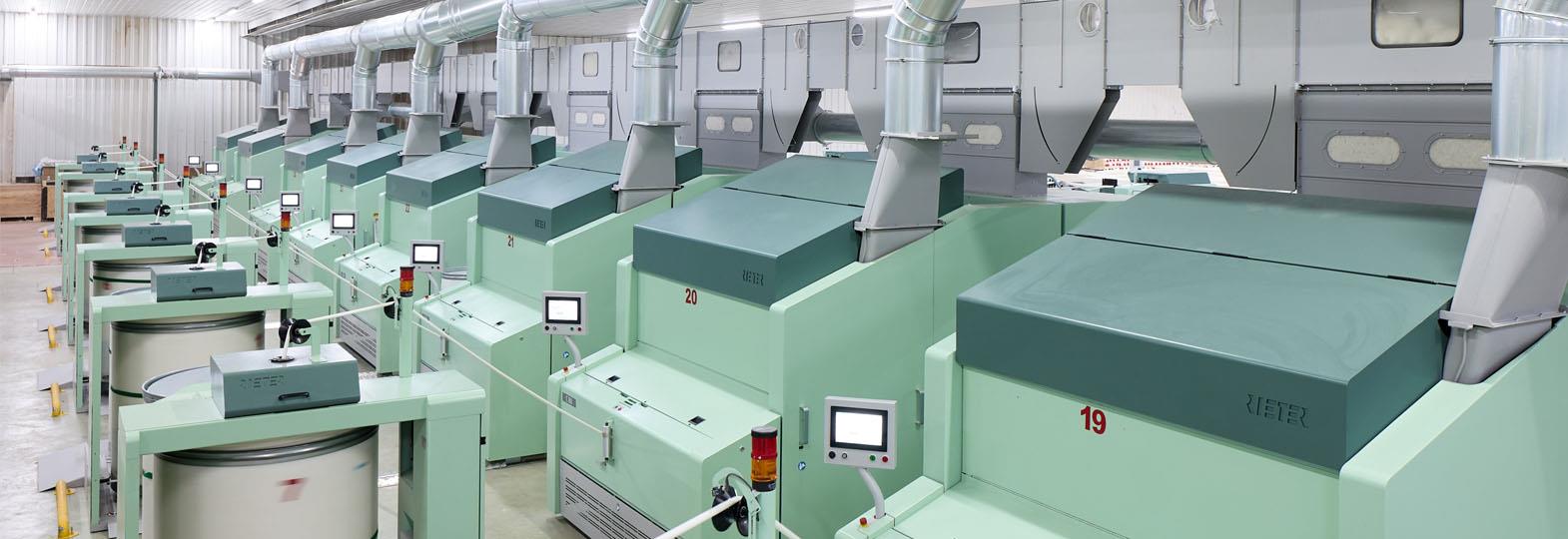The potential for recycling applications is huge – as are the challenges during processing. The card plays a decisive role in the yarn production process by opening and cleaning the material. The C 80 is perfectly equipped for recycling applications. The machine runs with high production rates and allows good quality yarn to be manufactured even with a high proportion of post-consumer material.
In a direct comparison at a customer spinning mill, the card C 80 with a production rate of 270 kilograms per hour achieved around four times the production rate of an older model of a competitor machine. 70 per cent cotton and 30 per cent post-consumer material were used as the material blend for producing rotor yarn with a count of Ne 12. Despite the high production rate of the C 80, the yarn quality was significantly better than the limit value defined by the customer. The thoroughly prepared fibre material also resulted in greater efficiency for the rotor spinning machine. The number of ends down was between 118 and 156 per 1,000 rotor hours. The finished product also convinced with its appearance and quality (Fig. 1).

75% lower energy consumption
The significantly higher production rate with very good sliver quality enabled the customer to use fewer cards during production and therefore to make considerable savings on energy costs. With a production rate of 270 kilograms per hour, the card C 80 replaced four cards with a working width of one metre. Energy consumption at the same production volume therefore decreased by 75 per cent, which is equivalent to $40,000 per year.
Raw material with 90% post-consumer material
Another customer processed a blend of 90 per cent recycled, bleached cotton from post-consumer material and 10 per cent polyester for its rotor yarn with a count of Ne 8 to Ne 24. With this challenging material blend and a yarn count of Ne 9, the card C 80 achieved a production rate of 120 kilograms per hour. In a direct comparison with the previous model C 70, with the same working width of 1.5 metres, the C 80 can achieve double the production rate and a higher yarn quality. Yarn imperfections are reduced by around 50 per cent with the C 80.
Tailor-made Graf clothings
Specially developed Graf clothings are used for processing recycling material. The material is thoroughly pre-separated with a sawtooth clothing on the licker-in unit. Non-compliant materials, such as unopened pieces of fabric, are efficiently eliminated at the mote knife of the licker-in. With the freely adjustable position setting of the mote knife and the licker-in speed, the quantity of waste can be easily set on the display and therefore specifically adjusted to the requirements of the material.
Proven benefits for all raw materials
The C 80 is the card with the largest active carding area on the market. The working width of 1.5 metres and 40 active flats of the C 80 are key advantages also for recycled material with a low separation level and a high number of neps. The longest pre- and post-carding zones can be individually equipped and configured to suit the raw material. The reliable web guide with optimally designed guide lips provides a flawless card sliver that is compacted in three stages. This is very important due to the high short-fibre content of recycled materials and the high delivery speeds. Thanks to these benefits, the card sliver of the C 80 also offers the optimal condition for a ring yarn made of recycling materials. This considerably increases the range of potential recycling products.








Comments